PRESERVING HOUSTON’S UNSENTIMENTALISM 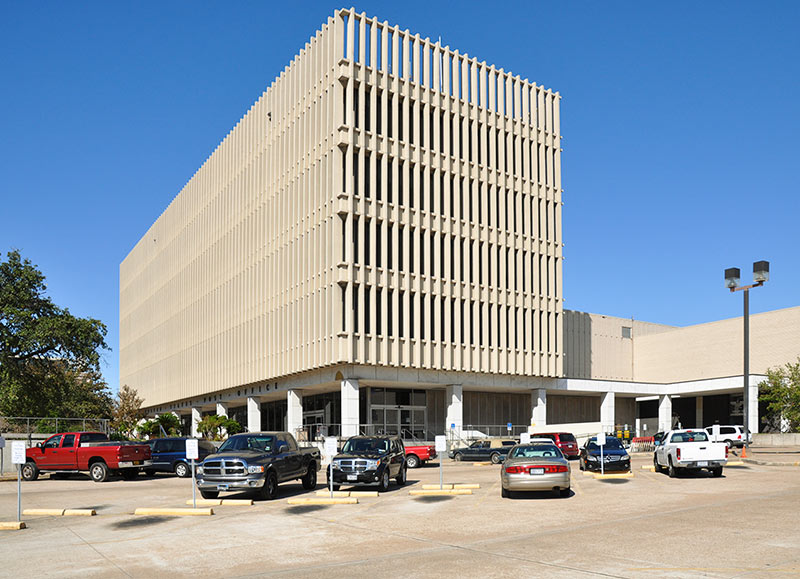 What Houston should be preserving for future generations, Scott Vogel ultimately argues in his editor’s note for the latest issue of Houstonia, is its glorious legacy of demolishing its own past. But first, there are a few annoying bastions of sentimentalism to, uh, tweak: “To me, any one of these adorable recollections seemed reason enough to save a building from the wrecking ball, or rather the explosive charges that ultimately reduced Macy’s née Foley’s to rubble over a few seconds last September. After all, why shouldn’t our descendants be able to see where Barbara, a member of the commentariat, had purchased a ‘going-away outfit’ for her wedding in 1972? Wouldn’t their lives be somehow diminished for not beholding, as John C. did, the ‘tight corkscrew ramps leading up and out’ of the Foley’s parking garage? Would they ever forgive our insanity for demolishing the place where Cody ‘actually bought our living room furniture’?
The last two plaintive cries were uttered over at that other Bayou City Book of the Dead, Swamplot.com, where there is an inverse relationship, science tells us, between an agitator’s outrage over a proposed bulldozing and the number of times he has actually visited/shopped at the spot during the last decade. A club open to only the most radical, militantly preservationist of internet do-nothings, Swamplot is a place where the closing of the Barbara Jordan Post Office downtown occasions the tearing of hair and rending of garments. (“We got our passports renewed there one Saturday—no line, in and out in 15 minutes!†“I’ve been going there every year for decades to send off my Christmas cards!â€)
Amid all the hand-wringing, I found myself growing nostalgic too, for the negligent, squandering, unsentimental, destructive Houston of old.” [Houstonia] Photo of Barbara Jordan Post Office: CBRE
What Houston should be preserving for future generations, Scott Vogel ultimately argues in his editor’s note for the latest issue of Houstonia, is its glorious legacy of demolishing its own past. But first, there are a few annoying bastions of sentimentalism to, uh, tweak: “To me, any one of these adorable recollections seemed reason enough to save a building from the wrecking ball, or rather the explosive charges that ultimately reduced Macy’s née Foley’s to rubble over a few seconds last September. After all, why shouldn’t our descendants be able to see where Barbara, a member of the commentariat, had purchased a ‘going-away outfit’ for her wedding in 1972? Wouldn’t their lives be somehow diminished for not beholding, as John C. did, the ‘tight corkscrew ramps leading up and out’ of the Foley’s parking garage? Would they ever forgive our insanity for demolishing the place where Cody ‘actually bought our living room furniture’?
The last two plaintive cries were uttered over at that other Bayou City Book of the Dead, Swamplot.com, where there is an inverse relationship, science tells us, between an agitator’s outrage over a proposed bulldozing and the number of times he has actually visited/shopped at the spot during the last decade. A club open to only the most radical, militantly preservationist of internet do-nothings, Swamplot is a place where the closing of the Barbara Jordan Post Office downtown occasions the tearing of hair and rending of garments. (“We got our passports renewed there one Saturday—no line, in and out in 15 minutes!†“I’ve been going there every year for decades to send off my Christmas cards!â€)
Amid all the hand-wringing, I found myself growing nostalgic too, for the negligent, squandering, unsentimental, destructive Houston of old.” [Houstonia] Photo of Barbara Jordan Post Office: CBRE
Houston History
SHAKING AT THE TOP OF A HOUSTON SKYSCRAPER IN THE MIDDLE OF A HURRICANE 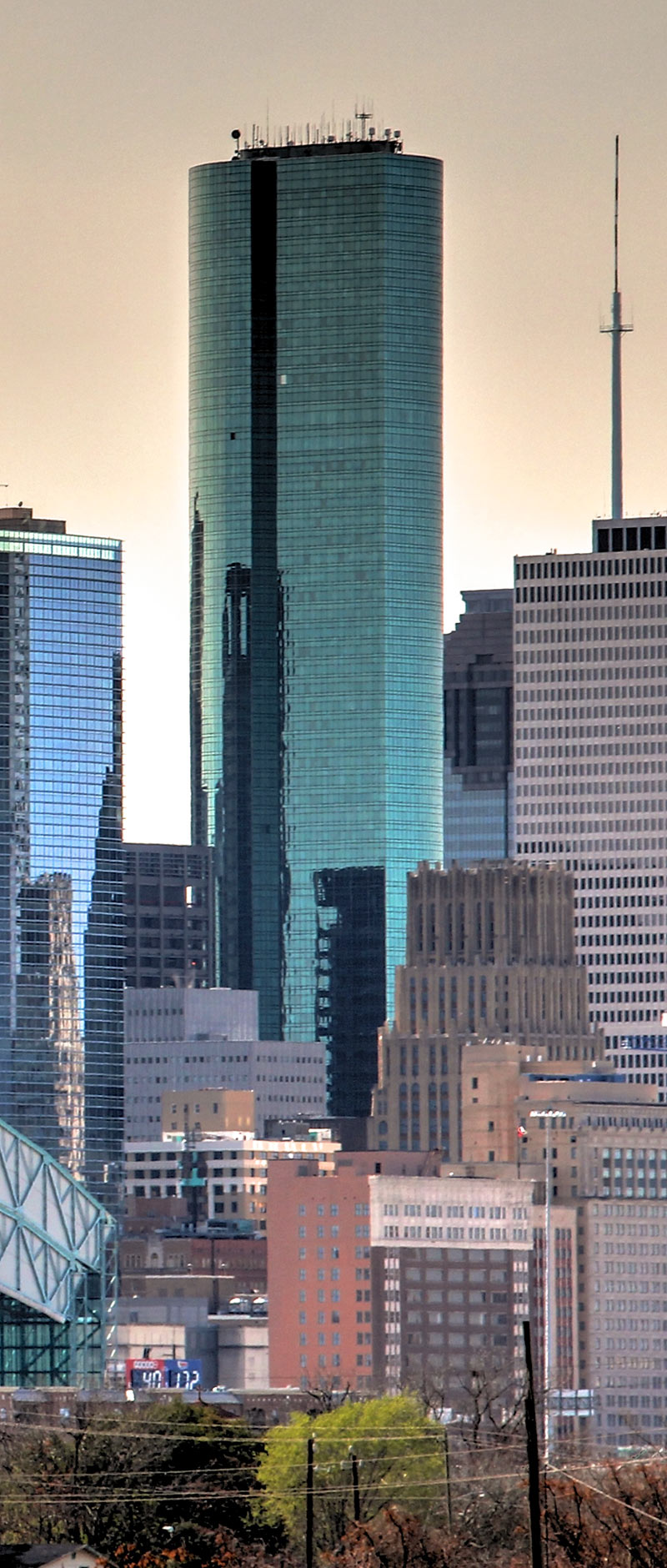 Houstonians who were around for Hurricane Alicia in 1983 might remember that the Wells Fargo Plaza tower downtown — then known as the brand-new Allied Bank Plaza — ended up losing more than 3,000 glass panels in the storm. But did you know that the building that night became the site of one of the few live wiggling-skyscrapers-in-a-storm experiments ever conducted? Engineers Robert Halvorson and Michael Fletcher spent the night of the hurricane in the 71-story tower’s unfinished top floor, just to see how much the building would sway; more than 30 years later, they described their experiences to Washington Post reporter Emily Badger. The peak acceleration of 43 milli-g’s they recorded — enough back-and-forth and twisting to make it impossible for them to walk upright — turned out to be “give or take, exactly the same thing that had been predicted by the wind tunnel” before the structure was built. [Gizmodo] Photo of Wells Fargo Plaza: Jackson Myers
Houstonians who were around for Hurricane Alicia in 1983 might remember that the Wells Fargo Plaza tower downtown — then known as the brand-new Allied Bank Plaza — ended up losing more than 3,000 glass panels in the storm. But did you know that the building that night became the site of one of the few live wiggling-skyscrapers-in-a-storm experiments ever conducted? Engineers Robert Halvorson and Michael Fletcher spent the night of the hurricane in the 71-story tower’s unfinished top floor, just to see how much the building would sway; more than 30 years later, they described their experiences to Washington Post reporter Emily Badger. The peak acceleration of 43 milli-g’s they recorded — enough back-and-forth and twisting to make it impossible for them to walk upright — turned out to be “give or take, exactly the same thing that had been predicted by the wind tunnel” before the structure was built. [Gizmodo] Photo of Wells Fargo Plaza: Jackson Myers
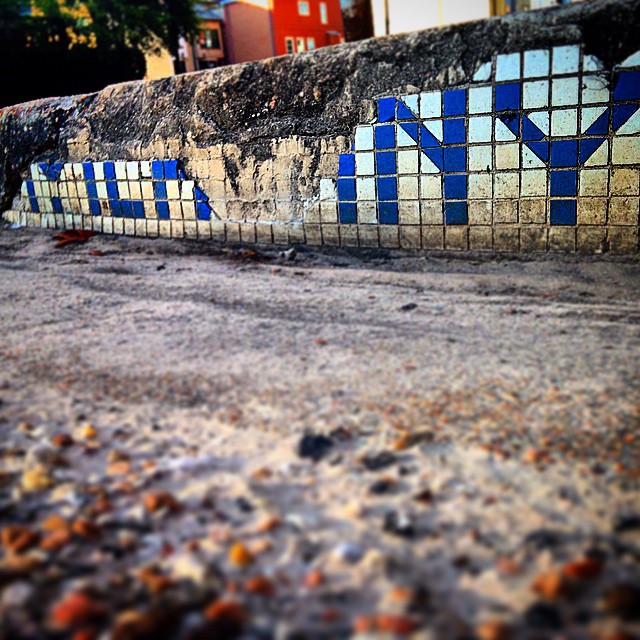
Downtowner Joey Sanchez has begun a project to photograph and document what he refers to as Houston’s first form of “street art”: the old school tile street signs that still stand guard by the curbs of a number of older city intersections. Already posted to the website he set up for the Blue Tile Project: an interactive map to confirmed locations — and links to Facebook and Instagram accounts, where photos of the signs, in various states of disrepair and dislocation, are posted. Sanchez reports he’s already found more than 160 of the signs, which he claims date from the 1920s.
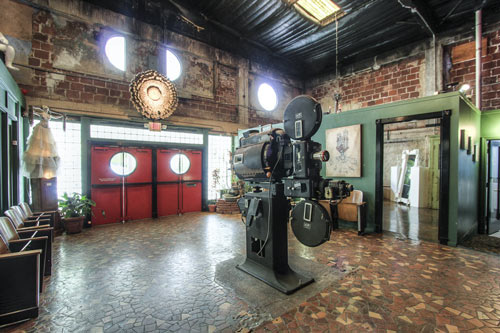
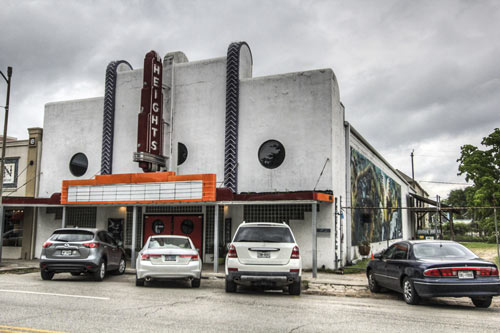
The asking price for the Heights Theater on bustling 19th St. in Houston Heights in today’s live-or-work listing is $1.9 million. The owners last toe-tested the reel deal in 2008, at $1.3 million. In the interim, surrounding neighborhoods have tipped even more hip. Though the future of the historic (but not protected) property is up for grabs, its past scrolls like an old film roll, with scenes of early prosperity, seedy decline, suspected arson, and restoration.
The exterior’s revamp earned the current owners a Good Brick Award 20-ish years ago. The interior, a shell space since its near destruction by fire in 1969, has been used for live theater, retail, events, and galleries. In the former lobby’s crossroads sits an original projector (top), a sculpture standing as both a testament and witness to passing eras.
THE ASTRODOME’S FIRST SOLUTION TO ITS CAN’T-SEE-THE-BALL PROBLEM 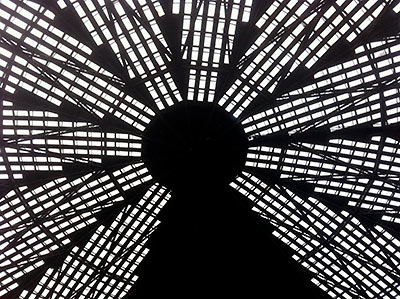 Before players had that problem losing fly balls in the glare, before a portion of the skylights were painted over, before anyone in Houston had ever considered replacing the outfield grass with something called AstroTurf, there was another system installed in the Astrodome meant to help baseball players keep their eyes on the ball. The Houston Chronicle‘s special section on the Harris County Domed Stadium — on the occasion of its 50th anniversary (today) and birthday party open house (tonight) — includes a reprint (PDF) of the same newspaper’s Astrodome extra from April 8, 1965, the day before opening day. And featured on page 62 is a short preview of the stadium’s space-age air-cleaning technology: “An unusual Honeywell-engineered ultraviolet sensor will run a continual check on the transparency of the air. If it gets murky — from dust or tobacco smoke — the system will signal stadium engineers to open a battery of cupola exhaust dampers.
Because air cleaners continuously scrub the air electronically, then pass it through special charcoal filters to sieve out any odors, air inside the stadium normally will be fresher and cleaner than the air outside. ‘In fact, it should be the cleanest air in all Texas,‘ says Lamar Bordelon, Honeywell project engineer on the stadium job.
The Honeywell system has an ultraviolet lamp underneath the seats along the third-base line, focused on an ultraviolet sensor in similar position along the first-base line, 700 feet across the stadium. These continuously indicate the transparency of the air between them on a meter located on the control center. Any time the transparency of the air drops to the point where a player would have a hard time seeing a baseball in play 350 feet away, a warning light flashes on.” [Houston Chronicle] Photo: Russell Hancock
Before players had that problem losing fly balls in the glare, before a portion of the skylights were painted over, before anyone in Houston had ever considered replacing the outfield grass with something called AstroTurf, there was another system installed in the Astrodome meant to help baseball players keep their eyes on the ball. The Houston Chronicle‘s special section on the Harris County Domed Stadium — on the occasion of its 50th anniversary (today) and birthday party open house (tonight) — includes a reprint (PDF) of the same newspaper’s Astrodome extra from April 8, 1965, the day before opening day. And featured on page 62 is a short preview of the stadium’s space-age air-cleaning technology: “An unusual Honeywell-engineered ultraviolet sensor will run a continual check on the transparency of the air. If it gets murky — from dust or tobacco smoke — the system will signal stadium engineers to open a battery of cupola exhaust dampers.
Because air cleaners continuously scrub the air electronically, then pass it through special charcoal filters to sieve out any odors, air inside the stadium normally will be fresher and cleaner than the air outside. ‘In fact, it should be the cleanest air in all Texas,‘ says Lamar Bordelon, Honeywell project engineer on the stadium job.
The Honeywell system has an ultraviolet lamp underneath the seats along the third-base line, focused on an ultraviolet sensor in similar position along the first-base line, 700 feet across the stadium. These continuously indicate the transparency of the air between them on a meter located on the control center. Any time the transparency of the air drops to the point where a player would have a hard time seeing a baseball in play 350 feet away, a warning light flashes on.” [Houston Chronicle] Photo: Russell Hancock
COMMENT OF THE DAY: HOW IT WORKS IN HOUSTON, THE FREE ENTERPRISE CITY 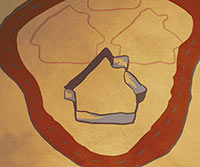 “. . . That is, and always has been, Houston. That unruly sprawl, those cookie-cutter suburbs, generic strip malls, traffic congestion, that all existed long before the Beltway was built. I grew up here, in a cookie-cutter suburb called ‘Sagemont’ located next to a 2 lane stretch of blacktop named ‘South Belt.’ My dad grew up in a cookie-cutter suburb 10 miles closer in, filled with generic strip malls, just outside what would become the 610 Loop. Today I live in another cookie-cutter suburb farther west, about half way between 610 and the Beltway. Still lots of congestion, sprawl, strip centers, etc. This is Houston, baby.
And just about everything in Houston exists because some powerful person (not necessarily a politician) owned tracts of land. All of those hip dense neighborhoods? They were empty fields that some speculator bought for next to nothing, then bribed . . . er, influenced someone in government to build something, often with tax dollars. That’s how things get done.” [Memebag, commenting on Driving Beltway 8, in Order To Read Houston in the Original] Illustration: Lulu
“. . . That is, and always has been, Houston. That unruly sprawl, those cookie-cutter suburbs, generic strip malls, traffic congestion, that all existed long before the Beltway was built. I grew up here, in a cookie-cutter suburb called ‘Sagemont’ located next to a 2 lane stretch of blacktop named ‘South Belt.’ My dad grew up in a cookie-cutter suburb 10 miles closer in, filled with generic strip malls, just outside what would become the 610 Loop. Today I live in another cookie-cutter suburb farther west, about half way between 610 and the Beltway. Still lots of congestion, sprawl, strip centers, etc. This is Houston, baby.
And just about everything in Houston exists because some powerful person (not necessarily a politician) owned tracts of land. All of those hip dense neighborhoods? They were empty fields that some speculator bought for next to nothing, then bribed . . . er, influenced someone in government to build something, often with tax dollars. That’s how things get done.” [Memebag, commenting on Driving Beltway 8, in Order To Read Houston in the Original] Illustration: Lulu
COMMENT OF THE DAY: HOUSTON’S REALLY GOOD OLD DAYS ARE GONE FOREVER  “The whole Houston region used to be a beautiful coastal plain where my family and extended family lived harmoniously with nature before 5,000,000 people showed up and paved over the whole damn place and called it Houston. Now I’m sad.
— Sincerely,
Karankawa Nation” [Bernard, commenting on Comment of the Day: What the House Meant] Illustration: Lulu
“The whole Houston region used to be a beautiful coastal plain where my family and extended family lived harmoniously with nature before 5,000,000 people showed up and paved over the whole damn place and called it Houston. Now I’m sad.
— Sincerely,
Karankawa Nation” [Bernard, commenting on Comment of the Day: What the House Meant] Illustration: Lulu
COMMENT OF THE DAY: WHAT THE HOUSE MEANT 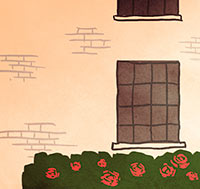 “My great-great grandparents purchased the land mentioned in the above article when there were just a few houses on the street, and the street was not yet paved. They built this house and 3 generations of my family lived together under its roof at one time. My grandparents met working at the movie theater that used to stand in the Village Arcade. My grandfather was an usher and my grandmother was a concession girl. He used to sneak her out of her bedroom window for dates when she was 15 and he was 16, a few years before he joined the Navy to fight in WWII. My great-grandfather planted rose bushes in front of his daughter’s bedroom window to stop her from climbing out. When my grandparents were first married, they lived in the house with her parents and grandparents. My parents lived in the house after they got married, and I lived my whole life on Chaucer until I got married. My grandfather remained in the house long after his wife passed, and himself lived there until he passed away early last year. All of my best memories were set within those walls, all the family meals, holidays and birthdays.
Driving past the muddy, empty lot felt like looking at someone’s usual armchair after they’ve passed away and expecting to see them sitting there, right as rain. Seeing those beautiful bone-colored porcelain bricks trampled under tire tracks . . . It took the air out of me. I hope that by sharing this history, people will understand that sometimes, a house is more than just 4 walls and a roof; this house was more than just a location and a parcel of land. Sometimes, it is the root that anchors us to our past, to our identity, to our origin.” [B Ferguson, commenting on Two Home Demos Mark Rice University’s Continuing March into Rice Village] Illustration: Lulu
“My great-great grandparents purchased the land mentioned in the above article when there were just a few houses on the street, and the street was not yet paved. They built this house and 3 generations of my family lived together under its roof at one time. My grandparents met working at the movie theater that used to stand in the Village Arcade. My grandfather was an usher and my grandmother was a concession girl. He used to sneak her out of her bedroom window for dates when she was 15 and he was 16, a few years before he joined the Navy to fight in WWII. My great-grandfather planted rose bushes in front of his daughter’s bedroom window to stop her from climbing out. When my grandparents were first married, they lived in the house with her parents and grandparents. My parents lived in the house after they got married, and I lived my whole life on Chaucer until I got married. My grandfather remained in the house long after his wife passed, and himself lived there until he passed away early last year. All of my best memories were set within those walls, all the family meals, holidays and birthdays.
Driving past the muddy, empty lot felt like looking at someone’s usual armchair after they’ve passed away and expecting to see them sitting there, right as rain. Seeing those beautiful bone-colored porcelain bricks trampled under tire tracks . . . It took the air out of me. I hope that by sharing this history, people will understand that sometimes, a house is more than just 4 walls and a roof; this house was more than just a location and a parcel of land. Sometimes, it is the root that anchors us to our past, to our identity, to our origin.” [B Ferguson, commenting on Two Home Demos Mark Rice University’s Continuing March into Rice Village] Illustration: Lulu
OUTLASTING THE HOUSE OF SATAN DOWN THE STREET 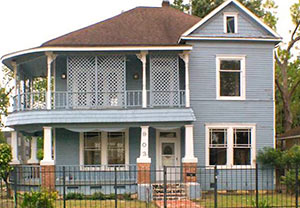 When you live in the same house at the corner of Welch and Crocker streets for 94 years, you see a lot of Montrose pass by. For example, Nell Stewart tells the Montrose District website, there was the “meticulously restored” Victorian on Welch St. (pictured here) that later became a Church of Satan: “‘How do I know?’ she asks. ‘It said so on a sign in the yard.’ Though raised a proper churchgoer, Stewart nevertheless was intrigued by her new neighbor. ‘He did nude weddings,‘ she says. “And he trained his children well. They went to Wharton Elementary and they would threaten the other kids if they wouldn’t give them their lunch money. They said they would turn them into black cats.’ Along the wraparound front porch, the Satanist installed a collection of outsized nude photos. The Satanist had moved in prior to her mother’s passing, and though Stewart would have liked to take a look at the nudes, when she went out walking with her elderly mother she was always steered in the opposite direction. ‘She refused to walk there,’ Stewart says. ‘I would have been interested. I just had the sense, this is not my world here.’†Though it later turned somewhat dilapidated, the house was recently renovated: “Today, when Stewart looks across the street, the house appears much as it did when she was a little girl almost a hundred years ago.” [Montrose District; Part 1] Photo of 903 Welch St. (before renovation): NuHabitat
When you live in the same house at the corner of Welch and Crocker streets for 94 years, you see a lot of Montrose pass by. For example, Nell Stewart tells the Montrose District website, there was the “meticulously restored” Victorian on Welch St. (pictured here) that later became a Church of Satan: “‘How do I know?’ she asks. ‘It said so on a sign in the yard.’ Though raised a proper churchgoer, Stewart nevertheless was intrigued by her new neighbor. ‘He did nude weddings,‘ she says. “And he trained his children well. They went to Wharton Elementary and they would threaten the other kids if they wouldn’t give them their lunch money. They said they would turn them into black cats.’ Along the wraparound front porch, the Satanist installed a collection of outsized nude photos. The Satanist had moved in prior to her mother’s passing, and though Stewart would have liked to take a look at the nudes, when she went out walking with her elderly mother she was always steered in the opposite direction. ‘She refused to walk there,’ Stewart says. ‘I would have been interested. I just had the sense, this is not my world here.’†Though it later turned somewhat dilapidated, the house was recently renovated: “Today, when Stewart looks across the street, the house appears much as it did when she was a little girl almost a hundred years ago.” [Montrose District; Part 1] Photo of 903 Welch St. (before renovation): NuHabitat
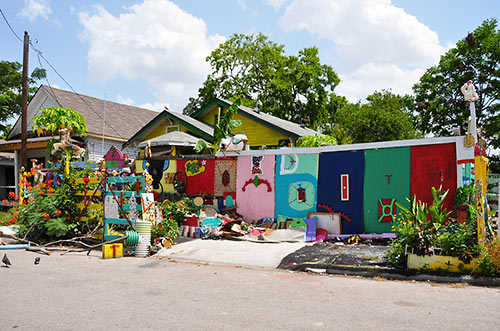
Where else but Houston will you ever come across a day-long urban celebration that brings together demolition, visionary art, inventive gardening, a stirring memorial, water infiltration, and toxic mold? These core elements of the city’s essential funkytown identity and more will be highlighted in the Third Ward on February 7, when Project Row Houses, the owner of the last of 3 homes the late Cleveland Turner serially transformed into environments festooned with yard art and brightly painted junk, ceremonially rips apart the rotting property at 2305 Francis St. on account of they discovered a month or 2 ago that it (along with many of the works stuffed inside) was contaminated “beyond any chance of salvation” with varying dark hues of dangerous and smelly mold spores.
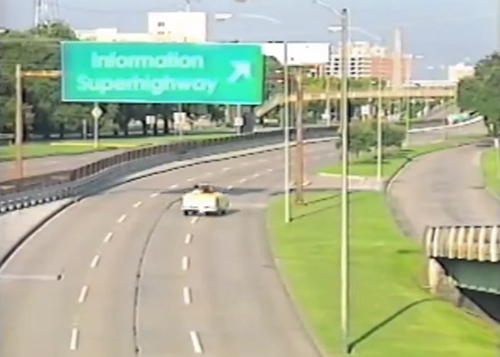
Sure, you might vaguely recognize the Houston street scene shown above, but maybe you’re unclear about what kind of modem you need to make the hard right turn from Memorial Dr. onto the information superhighway? “Maybe you’ve read or heard about the internet, but you’re still not exactly sure what it is? Well if that’s the case, don’t worry. In no time at all you’ll be able to impress everyone with your amazing techno-savvy.” Just by watching this hour-long 1995 PBS program sponsored by Compaq (and Viewers Like You) all about this crazy new Internet thing:
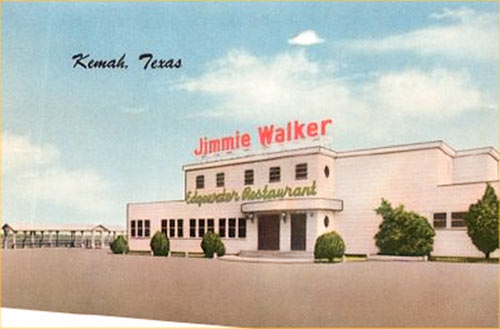
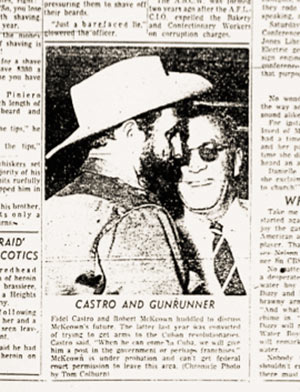
With the U.S.-Cuba cold war finally melting away, it’s as good a time as ever to point out a few key sites from Fidel Castro’s trip to the area, and those associated with Houston’s Robert Ray McKeown, the machinist-turned-international businessman-turned-peripheral figure to the JFK assassination. McKeown was also Castro’s best buddy on Galveston Bay, and a man who claimed to have met Lee Oswald in San Leon and sipped beer with Jack Ruby at Jimmie Walker’s Edgewater Restaurant in Kemah.
The story begins in Houston in 1950. McKeown, then 39, was a machinist with his own shop in Pasadena. One day his ship came in: an inventor approached him with a plan for a machine that could clean coffee better than any other before it. McKeown built the machine, and apparently several more, and the two men went into business. McKeown trolled the coffee ports of Latin America for sales, which eventually lead to him moving to Santiago, Cuba during the administration of president Carlos PrÃo Socarrás, who would become a friend.
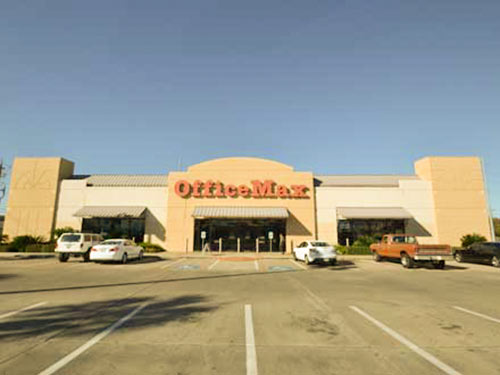
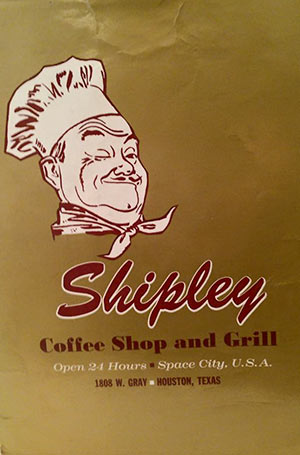
“We went there the very last night they were open and ended up on the TV news,” remembers reader Laura Friedl Jones of the 24-hour Shipley Coffee Shop and Grill that stood for years at the corner of W. Gray St. and Dunlavy St., where the Office Max above squats today.
While you could pick up a dozen glazed there, the fare at this Shipley ranged far afield of the norm for the homegrown chain:
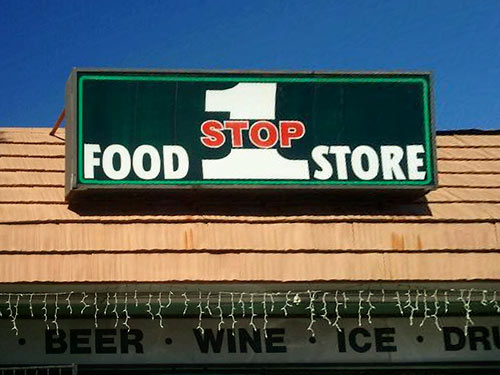
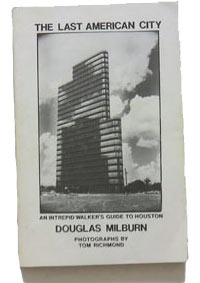
In the tragically out-of-print The Last American City: An Intrepid Walker’s Guide to Houston, magazine writer and editor and Rice German professor Douglas Milburn took a break from his bipedal tours of Montrose, the Galleria, downtown and the Med Center to share his hard-won, footsore knowledge of Houston’s finest convenience stores, circa 1979.
It was a propitious moment for the convenience store concept; gas stations had yet to erode their share of the quick and easy food and drinks market, so Milburn had plenty to choose from, not least, from among dozens of U-Tote’Ms.
Guided by Leroy Melcher, U-Tote’M was arguably Houston’s most beloved homegrown convenience store chain, albeit one bearing a name and totem pole imagery that would be considered wildly offensive by today’s standards.
A Tulsa U-Tote-M made a cameo in The Outsiders:
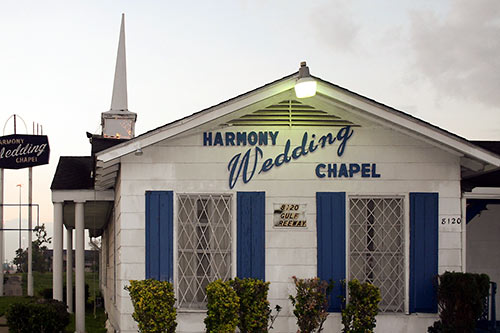
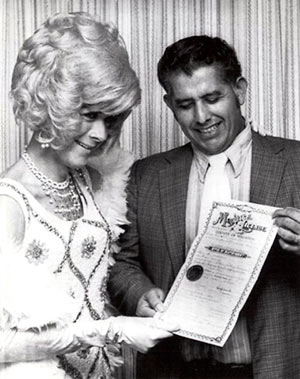
The Harmony Wedding Chapel at 8120 Gulf Freeway has been one of Houston’s most familiar freeway-side landmarks for 50 years, a little slice of backstreet Las Vegas that has now provided 5 generations with cheap, often hastily-arranged weddings. (Even today a bare-bones ceremony with no guests is a mere $50.)
But as the site of the first gay marriage in Texas, it is a landmark in American LGBT history too. There on the banks of Sims Bayou, on October 6, 1972, Brownsville-bred former high school football player Antonio Molina married William “Billie” Ert, a female impersonator who performed in local nightclubs as “Mr. Vicki Carr,” in tribute to the El Paso-bred singer. (One such spot was Ursula’s, a lesbian-friendly bar at 1512 W. Alabama, the future home of a succession of failed restaurants and now the home of the Skin Renewal Center.)
Handing over a wedding certificate Ert obtained by appearing in front of court clerks in very convincing drag, the couple exchanged vows before an activist chaplain they had brought in, and sealed them with a kiss. A firestorm awaited them outside the chapel’s Gulf Freeway feeder road-facing doors.Â

